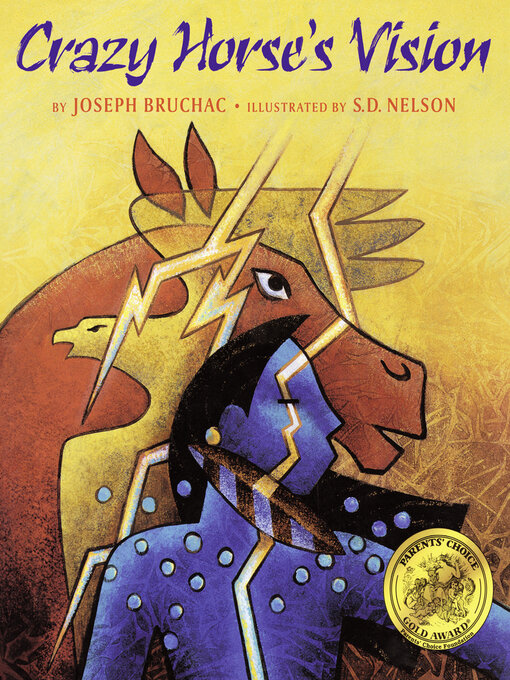The true story of the great Sioux warrior who, as a young boy, defies tradition and seeks a vision on his own in hopes of saving his people.
Crazy Horse is among the best known Native American heroes. Yet many people do not know his boyhood name was Curly, inspired by his curly hair.
Curly was a leader even as a young boy, taming wild horses and hunting powerful buffalo. But all his bravery could not prepare him for the trouble he and the other Lakota Indians would face with the white settlers. Wanting to help his people after a fierce battle that mortally wounded Chief Conquering Bear, Curly defied traditional custom and risked his own life by running away, up to the hills, to seek a vision.
Renowned Abenaki author Joseph Bruchac tells a gripping and compelling story of how the dedicated young boy, Curly, grows into the brave warrior Crazy Horse. Sioux artist S.D. Nelson, with paintings inspired by the ledger book style of the Plains Indians, evokes the drama and tragedy of an important figure in American history.




